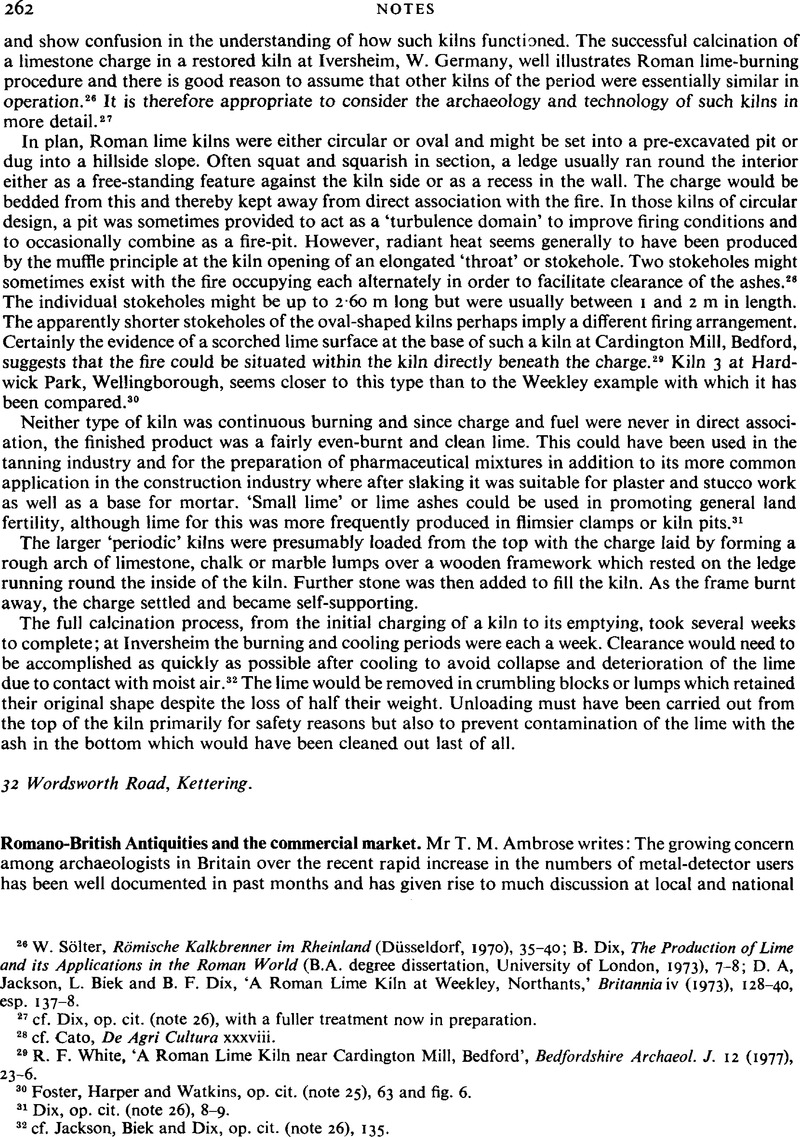No CrossRef data available.
Article contents
Romano-British Antiquities and the commercial market
Published online by Cambridge University Press: 09 November 2011
Abstract

- Type
- Notes
- Information
- Copyright
- Copyright © T. M. Ambrose 1979. Exclusive Licence to Publish: The Society for the Promotion of Roman Studies
References
33 Something of the scale of the problem can be appreciated by the fact that Lincolnshire County Council Solicitors’ Department has been informed by the Home Office that in the year 1978–9 some 40,000 new licences have been sold to metal-detector users.
34 See for example the recently approved statement on treasure-hunting by the Council for British Archaeology and ‘Archaeological finds: some suggestions about the use of metal detectors in Norfolk and Suffolk’ by the SCOLE Archaeological Committee (1978).
35 See Davies, G., ‘Museums and Archaeology – a lost cause?’, Museums Journal 78 (1978), p. 124.Google Scholar


